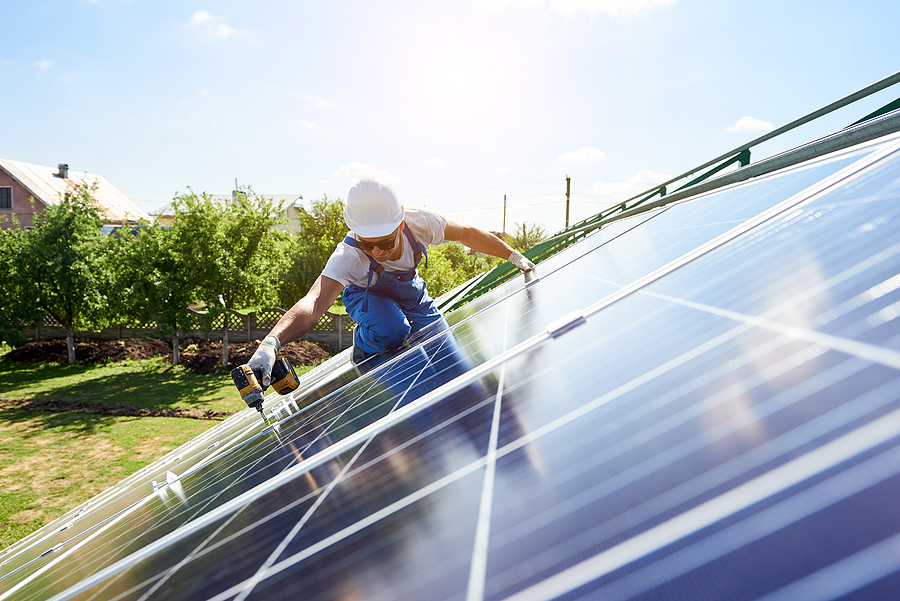Commercial real estate development stands at a pivotal moment. As environmental concerns intensify and regulatory frameworks evolve, sustainable building practices have transformed from optional considerations to strategic necessities. These practices encompass a comprehensive approach to construction that prioritizes environmental responsibility, economic efficiency, and social well-being throughout a building’s lifecycle.
Sustainable construction involves integrating eco-friendly materials, energy-efficient systems, and resource-conscious methods from initial planning through occupancy and eventual deconstruction. For commercial developers, understanding these benefits isn’t just about environmental stewardship—it’s about securing competitive advantages in an increasingly sustainability-focused market.
The shift toward green building materials and sustainable methodologies represents more than a trend. It’s a fundamental reimagining of how we construct commercial spaces that serve both immediate business needs and long-term community interests.

Environmental Benefits That Drive Real Impact
Reducing Carbon Footprint Through Smart Design
Sustainable construction significantly reduces environmental impact through strategic material selection and energy-efficient design. Buildings account for approximately 40% of global energy consumption, according to the U.S. Green Building Council, making construction choices critically important for environmental outcomes.
Green building materials like recycled steel, reclaimed wood, and bamboo flooring offer substantial environmental advantages. Recycled steel, for instance, requires 75% less energy to produce than virgin steel while maintaining identical structural integrity (Steel Recycling Institute). Reclaimed wood prevents deforestation while adding unique aesthetic value to commercial spaces.
Energy Efficiency That Pays Dividends
Energy-efficient systems integrated during construction deliver measurable environmental benefits. Solar panels, high-performance insulation, and advanced HVAC systems reduce operational energy consumption by 20-50% compared to conventional buildings (U.S. Department of Energy). These improvements translate directly into reduced greenhouse gas emissions and decreased strain on local power grids.
LED lighting systems, smart building controls, and energy-efficient windows create comprehensive efficiency ecosystems. When combined with sustainable materials like recycled concrete for foundations and recycled asphalt pavement for parking areas, these elements create buildings that actively contribute to environmental restoration rather than degradation.
Waste Reduction Through Circular Construction
Sustainable building practices emphasize waste reduction through careful planning and material reuse. Construction waste typically represents 30-40% of total solid waste in urban areas. By incorporating recycled construction materials and designing for disassembly, sustainable projects dramatically reduce waste streams while creating valuable resource loops.
Economic Advantages That Strengthen Your Bottom Line
Long-Term Cost Savings Through Efficiency
While sustainable construction may require higher upfront investments, the long-term financial benefits significantly outweigh initial costs. Energy-efficient buildings typically reduce operational costs by 20-30% annually through decreased utility expenses, reduced maintenance requirements, and extended equipment lifespans (U.S. Green Building Council).
Water-efficient fixtures, smart irrigation systems, and rainwater harvesting reduce water costs while minimizing strain on municipal systems. These operational savings compound over time, creating substantial financial advantages for property owners and tenants alike.
Government Incentives and Tax Credits
Government incentives and tax credits for sustainable building projects can reduce upfront costs by up to 30% (U.S. Department of Energy, 2023). Federal tax credits, state rebates, and local incentives create attractive financial packages for developers committed to sustainable practices. These programs often include expedited permitting processes, reduced impact fees, and favorable financing terms.
LEED certification programs provide additional economic benefits through increased property values, enhanced marketability, and preferential lending rates. Banks increasingly offer green building loans with favorable terms, recognizing the reduced risk associated with energy-efficient properties.
Increased Property Value and Market Appeal
Sustainable buildings command premium rental rates and sale prices in competitive markets. Studies consistently show that LEED-certified buildings achieve 3-5% higher sale prices and 10-15% higher rental rates compared to conventional properties. These premiums reflect growing tenant demand for healthy, efficient work environments.
Market research indicates that 80% of corporate tenants prioritize sustainability features when selecting commercial space. This trend creates competitive advantages for developers who integrate sustainable practices from project inception.
Request a Construction Consultation Today ☑
Social Impact That Builds Community Trust
Improved Indoor Air Quality and Health
Sustainable building practices prioritize indoor environmental quality through careful material selection and ventilation design. Low-VOC paints, formaldehyde-free insulation, and natural ventilation systems create healthier indoor environments that support occupant well-being and productivity.
Enhanced air quality reduces sick building syndrome, decreases absenteeism, and improves cognitive performance. These benefits translate into measurable productivity gains for commercial tenants, creating additional value propositions for sustainable properties.
Community Health and Environmental Justice
Sustainable construction projects contribute to broader community health by reducing local pollution, minimizing heat island effects, and improving urban air quality. Green roofs, permeable paving, and strategic landscaping create micro-environments that benefit entire neighborhoods.
These improvements are particularly important in underserved communities where environmental burdens disproportionately impact residents. Sustainable commercial development can serve as catalysts for broader community revitalization while addressing historical environmental inequities.
Navigating Challenges and Implementation Strategies
Overcoming Initial Cost Barriers
Higher upfront costs represent the most common challenge in sustainable construction adoption. However, creative financing strategies can mitigate these barriers. Green bonds, sustainability-linked loans, and performance-based contracting allow developers to spread costs while capturing immediate benefits.
Value engineering approaches help identify cost-effective sustainability measures that deliver maximum impact. Prioritizing high-impact, lower-cost improvements like enhanced insulation, efficient lighting, and smart controls can provide substantial benefits within conventional budgets.
Ensuring Compliance and Certification
Legal considerations surrounding sustainable building practices continue evolving as regulations become more stringent. LEED certification provides standardized frameworks for verifying sustainable practices while ensuring compliance with environmental regulations.
Local and federal building codes increasingly incorporate energy efficiency requirements and environmental impact standards. Staying ahead of these regulatory changes through proactive sustainable practices reduces compliance risks while positioning projects for future requirements.
Environmental regulations related to waste management, emissions, and resource consumption require careful attention throughout project development. Consulting with legal experts ensures compliance with all applicable laws and standards while maximizing available incentives.
Building Expertise and Partnerships
Successful sustainable construction requires specialized knowledge and reliable partnerships. Working with experienced green building consultants, certified contractors, and sustainability-focused architects ensures project success while minimizing implementation risks.
Developing internal expertise through training and certification programs creates long-term competitive advantages. Many organizations find that investing in LEED accreditation for key team members pays dividends across multiple projects.
Building a Sustainable Future Together
The benefits of sustainable building practices in commercial construction extend far beyond environmental responsibility. They represent strategic investments in long-term profitability, community well-being, and competitive positioning in an evolving market.
As regulations tighten and tenant expectations rise, sustainable practices will become essential rather than optional. Developers who embrace these practices now position themselves as industry leaders while contributing to meaningful environmental and social progress.
The path forward requires commitment, expertise, and strategic partnerships. However, the environmental, economic, and social benefits create compelling cases for sustainable construction adoption across all commercial development projects.
Ready to explore how sustainable building practices can benefit your next commercial project? Contact us today for consultation to discover customized strategies that align with your development goals while maximizing environmental and economic returns.
Related Post: Building Green for a Brighter Future: Financial Perks of Sustainable Construction

